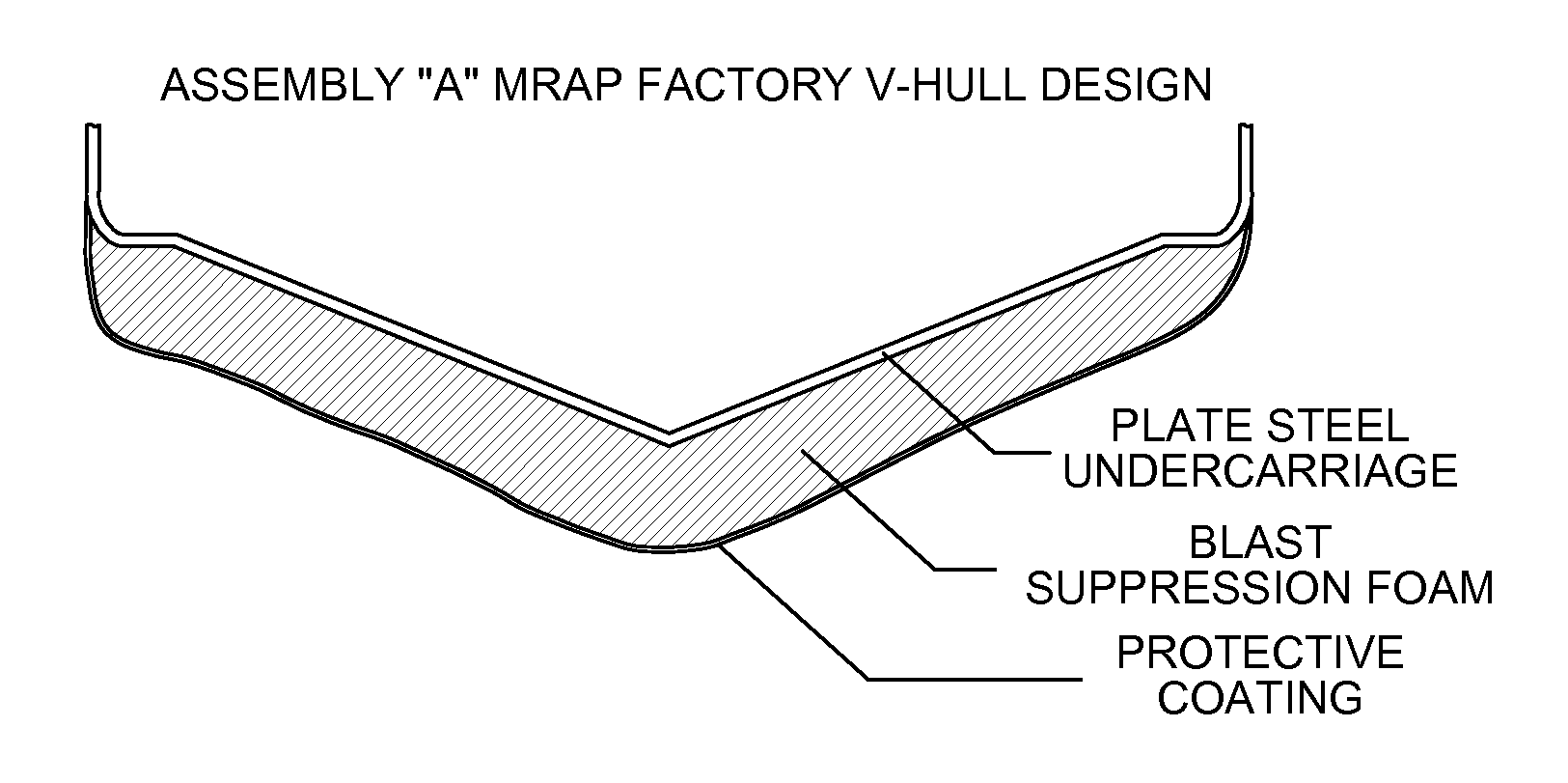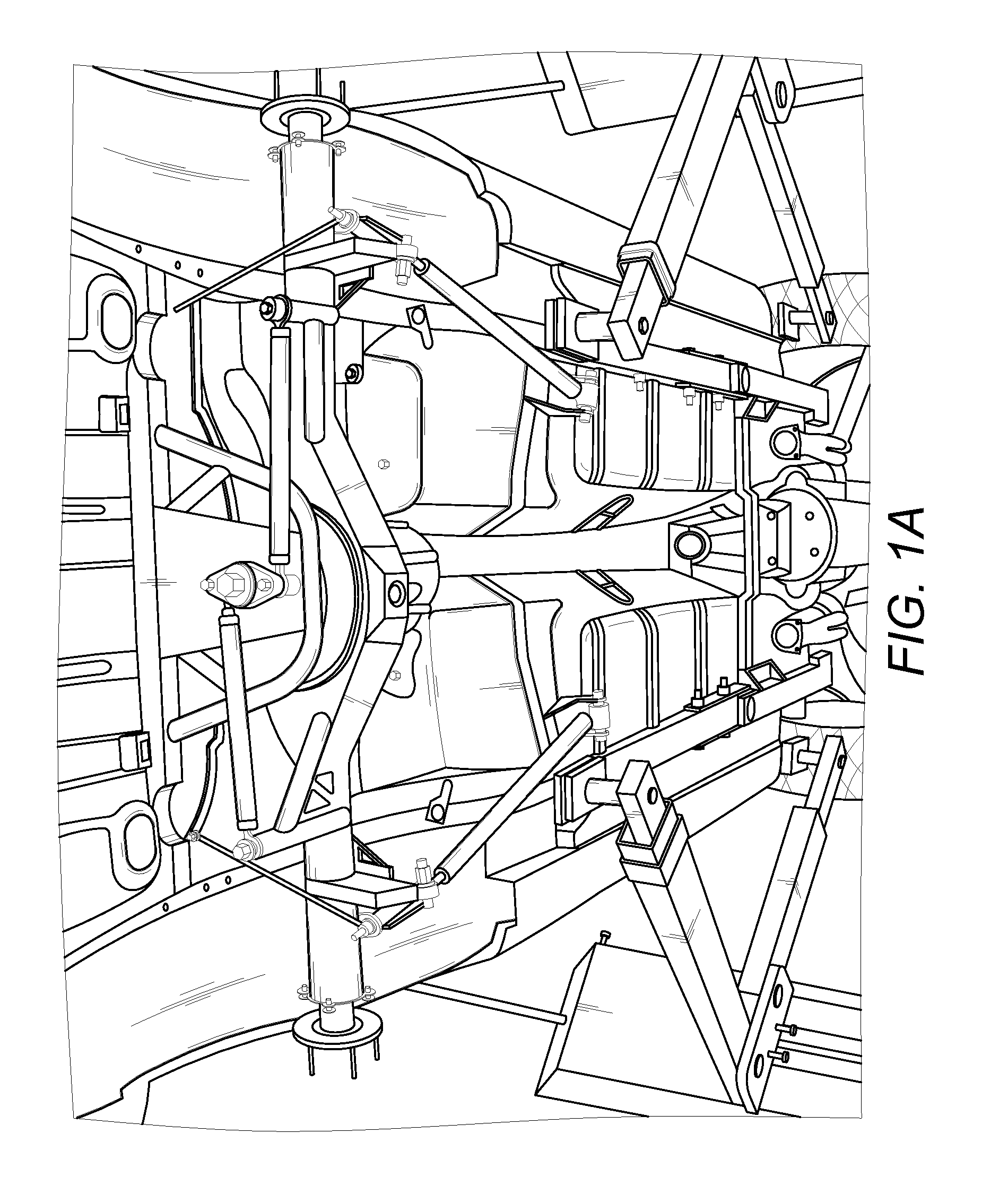Blast mitigation system for military vehicles
a technology for military vehicles and blast mitigation, applied in the direction of armoured vehicles, protective equipment, armour plates, etc., can solve the problems of significant occupant injury, death, and ineffective protection of armored vehicles, and achieve the effect of improving vehicular protection
- Summary
- Abstract
- Description
- Claims
- Application Information
AI Technical Summary
Benefits of technology
Problems solved by technology
Method used
Image
Examples
Embodiment Construction
[0034]As described above, one embodiment of the invention is a method of providing a degree of explosive blast shock protection to the occupants of a vehicle comprising adding one or more layers of rigid closed-cell spray polyurethane foam to the undercarriage of the vehicle. A preferred material used herein is Honeywell's TerraStrong® Rigid Foam.
[0035]FIGS. 1A and 1B show a military vehicle (a truck) before treatment by this invention. FIG. 1A shows the underside or undercarriage of the vehicle. FIG. 1B is a plan view of the vehicle, shown on a lift which allows the treatment with one or more layers of rigid closed-cell spray polyurethane foam to the undercarriage of the vehicle.
[0036]FIG. 2 illustrates Assembly “A” herein, an MRAP with a factory V-hull design modified with the blast suppression or mitigation materials of the present invention. As illustrated therein, the MRAP factory V-hull design has a “V”-shaped armor plate steel form added to the undercarriage of a vehicle. Thi...
PUM
 Login to View More
Login to View More Abstract
Description
Claims
Application Information
 Login to View More
Login to View More - R&D
- Intellectual Property
- Life Sciences
- Materials
- Tech Scout
- Unparalleled Data Quality
- Higher Quality Content
- 60% Fewer Hallucinations
Browse by: Latest US Patents, China's latest patents, Technical Efficacy Thesaurus, Application Domain, Technology Topic, Popular Technical Reports.
© 2025 PatSnap. All rights reserved.Legal|Privacy policy|Modern Slavery Act Transparency Statement|Sitemap|About US| Contact US: help@patsnap.com



